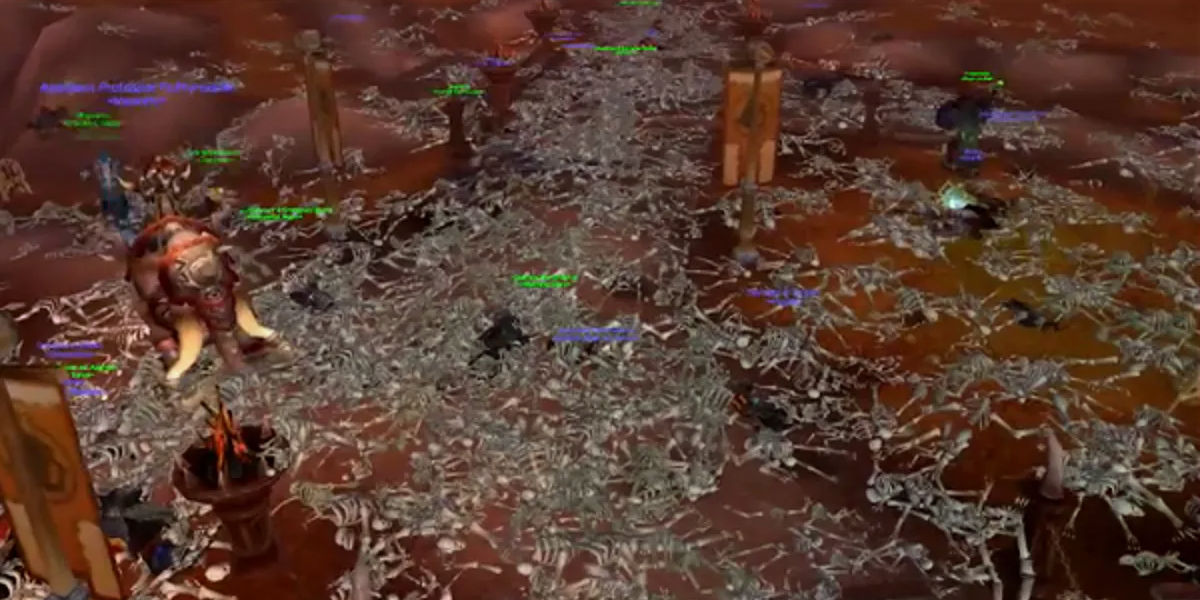The world of gaming has often been a playground for extraordinary and unexpected events. Among the most prominent is World of Warcraft's Corrupted Blood Incident, a virtual plague within the renowned multiplayer online video game. This incident left lasting impressions among game developers, players, and even scholars in the field of epidemiology.
The Corrupted Blood Incident has become a textbook example of how unplanned events in WoW or any other multi-user environment can lead to unique user experiences, both thrilling and terrifying. In this article, we'll delve into the causes and consequences of this infamous in-game epidemic, exploring the unforeseen ripple effects it had on the gaming community and beyond.
What Caused the Corrupted Blood Incident in WoW?
The Corrupted Blood incident traces its genesis back to September 13, 2005, with the release of the game's 'Zul'Gurub' update. A new gameplay feature was introduced, named Hakkar the Soulflayer, also known as the 'god of Blood'. Hakkar was a unique end-boss that wielded a particular spell, dubbed Corrupted Blood.
This insidious infection initially affected only those players engaged in combat with Hakkar. It proved to be a devastating weapon, continuously draining the health of characters and spreading to those nearby. Despite being lethal to weaker players, it was entirely manageable within the confines of the boss fight.
[puxin_related_articles]
However, as fate would have it, the disease didn't stay confined for long. Players soon found out that their pets and minions, who could also contract the disease, were the carriers of the plague outside Zul'Gurub. When a player would teleport back to a populated city with an infected pet or minion, the disease would jump from NPC to NPC and, thus, from player to player, creating a pandemic that was both uncontrollable and deadly.
Unplanned Events in WoW: The Pandemic Unleashed
In the wake of this exponential spread, the in-game world quickly became a dystopia. Major cities were virtually uninhabitable with piles of player skeletons littering the ground, while survivors fled to the relative safety of the countryside. For several weeks, the entire virtual society operated on the precipice of anarchy.
The creators of the game, Blizzard Entertainment, attempted to intervene. They tried to institute quarantines and issued pleas for players to vacate the major cities. But it proved challenging to combat the emergent behaviors of their player base, who either inadvertently continued to spread the disease or deliberately did so, reveling in the chaos.
The Corrupted Blood Incident became one of the most notable unplanned events in WoW, leading not only to server-wide disruptions, panic, and chaos but also sparking real-world discussions and studies regarding infectious disease control and the behavior of individuals during pandemics. Indeed, Corrupted Blood ended up transcending Azeroth and offering valuable insights to the real world.
Turning Pixels into Lessons:
As we explore the consequences of World of Warcraft's Corrupted Blood Incident further in the coming sections, we will witness how this inadvertent in-game plague had some crucial pointers for real-world pandemic responses, and how it forever changed the landscape of virtual world gaming.
In-Game Epidemiology and Corrupted Blood
The infamous 'Corrupted Blood' incident serves as a significant cornerstone in gaming epidemiology that shook the World of Warcraft's robust ecosystem. Corrupted Blood was an infectious disease accidentally spread across the virtual world, just like a real-world epidemic. It wasn't a virus planted by hackers or a glitch in the system—it was a spell gone awfully wrong.
This accidental artificial pandemic's origin traces back to the introduction of Hakkar the Soulflayer, a challenging boss. Hakkar would cast a spell called Corrupted Blood on players, inflicting damage and spreading to others nearby. Although intended to last only a few seconds and work strictly within Hakkar's lair, a programming overlook led to the disease seeping into the outside world.
The Catastrophe of Corrupted Blood
The Corrupted Blood did not discern between the high-level and low-level players, proving lethal to many. As players interacted, the disease spread wildly—much like the real-world transmission of viruses. Non-playable characters acted as asymptomatic carriers, further spreading the disease and making it almost impossible to contain.
While high-level characters could withstand the effect for a while due to their advanced skills and resources, lower levels were not so fortunate, often instantly falling victim. Urban centers in the game became akin to death traps, littered with the virtual bodies of characters succumbing to the virus. The communal and social nature of World of Warcraft inadvertently facilitated a full-fledged pandemic within the game, emulating real-world epidemic scenarios.
The End and Aftermath of the Invasion
Blizzard, the parent company, attempted to enforce quarantines within the game to isolate infected players, but these measures were insufficient due to non-compliance and the disease's rapid spread. Eventually, Blizzard had to use a hard-reset of the servers to end the pandemic, signaling a humbling defeat against the virtual epidemic.
Despite being chaotic and disastrous for the players, the Corrupted Blood incident presented an opportunity for researchers in epidemiology, public health, and behavioral sciences to study infection dynamics. The incident offered real-time and comprehensive data on human behavior during pandemics such as compliance with societal lockdowns, emergency orders and measures, and the effects of misinformation.
Insights Drawn and Lessons Learned
In hindsight, The Corrupted Blood Incident served as a chillingly realistic simulation of how infectious diseases propagate among a population. The World of Warcraft's pandemic highlighted the role of human behavior in disease spread—whether it's the intentional spreading of the virus, non-adherence to quarantine measures or the panic and chaos that erupted once the magnitude of the situation was realized.
Although unintentional, the Corrupted Blood incident shaped the understanding of disease modelling methods, infection dynamics, and how population behavior alters the course of a disease's spread. In the current era of the COVID-19 pandemic, the lessons from the virtual world of gaming seem more pertinent than ever.

